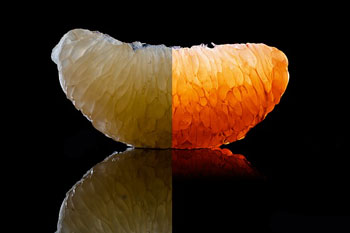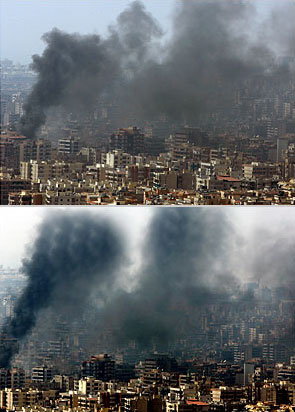Who doesn’t post-process images to enhance reality. But there’s a growing concern that news photos are excessively manipulated. After the assumingly false allegations of forgery leveraged against photographer Paul Hansen now even World Press Photo updated its rules for the 2014 contest. Following discussions and widespread speculation regarding the permissible levels in post-processing of image files, they changee the procedures for examining the files during the judging to create more transparency. The root of the controversy remains the same: even top news photographers have their work digitally enhanced these days. Mounting competition in the market for news images is forcing photojournalists to make their output as dramatic as possible. But where are the limits of cosmetic improvement?
There is much more competition among photographers and photos today. They have to outdo each other. This is also achieved with tools like image enhancement. Well even Nachtwey does it as you’re about to learn. Spiegel magazine talks of the “digital darkroom revolution.” The computer perfects and expands the possibilities of what was once done in the darkroom to enhance the effectiveness of a photo during development and printing.

The old Kodak slogan, “You press the button. We do the rest,” is on the door, but one word has been added: “better.”
It isn’t just an advertising pitch, but can also be interpreted as a suggestion that what photos show has always been more than “reality.” Palmisano:
It used to be a chemical process, and now it’s a mathematical one.
What distinguishes Palmisano is not just the virtuosity with which he uses the software, but also perhaps the fact that he is aware of how sensitive his work is. The difference between photojournalism and photography is ethics. 10b Photography is good at trying out possibilities without overstepping limits:
There is a clear definition of what constitutes impermissible manipulation of a journalistic photo. It includes, for example, moving around pixels within a photo. But the choice of development techniques, as well as modifying contrast, saturation and density, are all allowed in principle. Says Palmisano:
There are no “correct” colors. It’s all relative.

The colors were so intensified through editing that the scene looks almost surreal. This is allowed, says Palmisano. What isn’t permitted, he adds, is to change the relationship among the colors and to turn, for example, the green house in the photo into a red one.
News agencies, in particular, place significantly narrower limits on what is permissible, but they too do not completely prohibit post-processing.
The Associated Press (AP), for example, essentially allows only the kinds of enhancements that were once commonplace in the darkroom, and that “restore the authentic nature of the photograph,” as the agency states a little enigmatically.
Industry standard however is: there is no absolute rule in terms of enhancement. Gone are the days when photos had the mystique of being objective documents which can depict reality in genuine form and without any subjective interpretation. Paradoxically, this is only heightened through digitization.
Many photographers exaggerate the events. Talk about pressure to make photos more dramatic. Because even when shot with the best of camera and optics, “Photos look totally flat in their original state,” says award-winning Russian photographer Yuri Kozyrev.
Even James Nachtwey “manipulates”? Palmisano and Nachtwey have been working together for two years. Working with the legendary war photographer is especially time-consuming. Palmisano says that he can spend up to 12 hours on a Nachtwey photo. By the end of the process, he and Nachtwey may have exchanged up to 100 emails, addressing the most painstakingly detailed changes.
Ironically, the magic of Photoshop makes it possible to edit photos to look as if they had not been edited with Photoshop. Palmisano believes that in the future photographers will increasingly emphasize authenticity by using post-processing to make their images look less perfect than if they had been taken with a digital camera. The worse a spectacular photo looks, the more genuine it feels.


